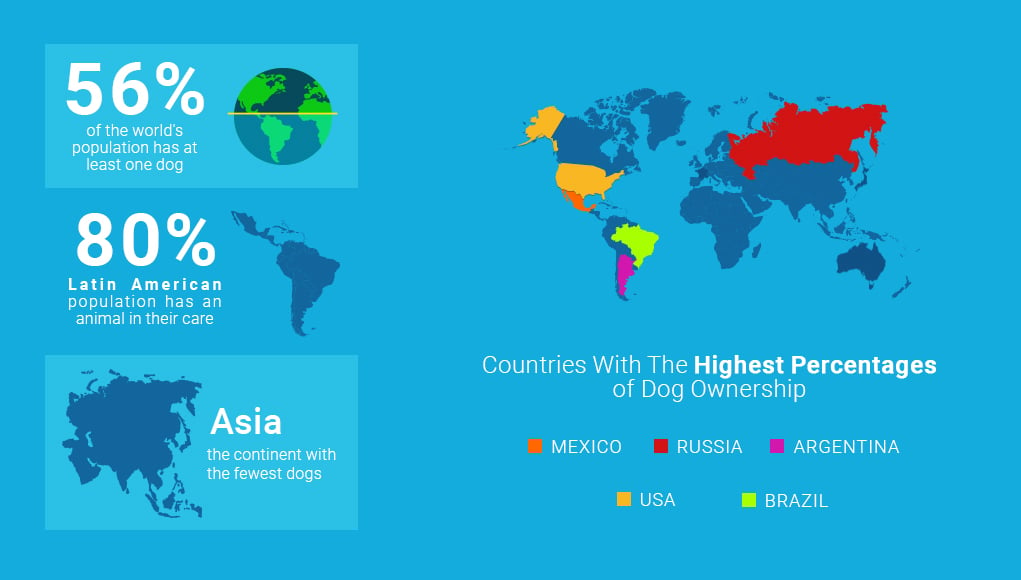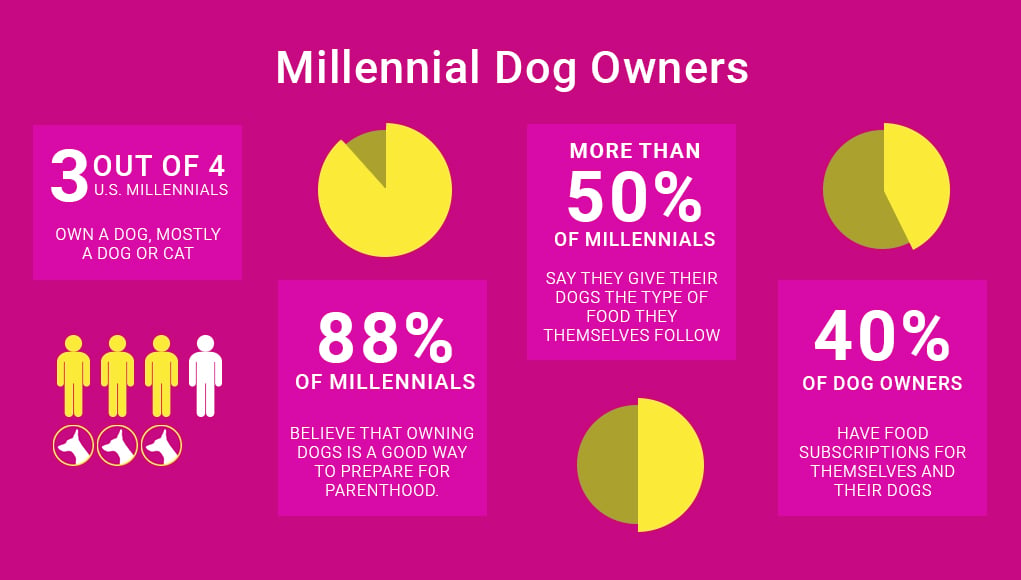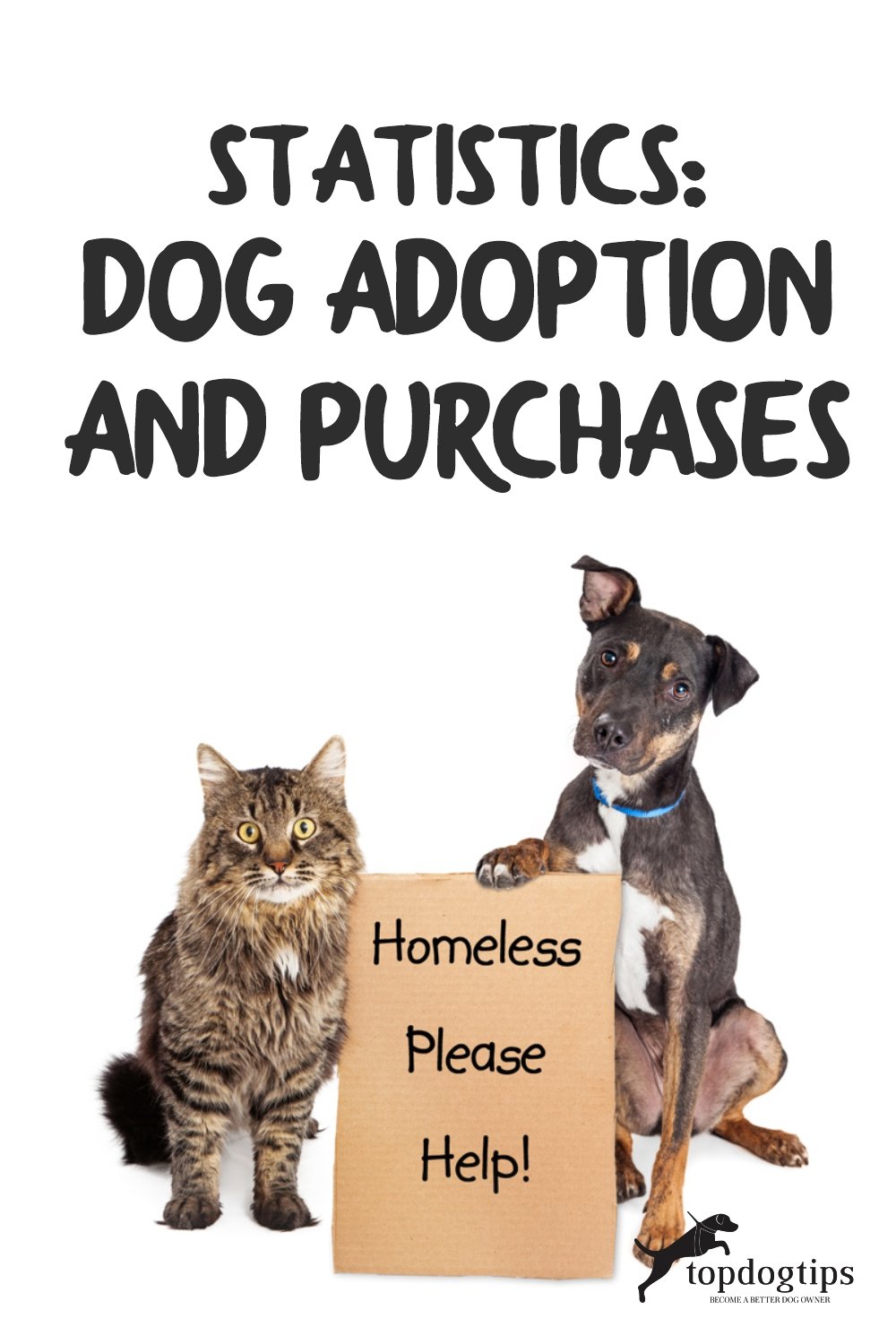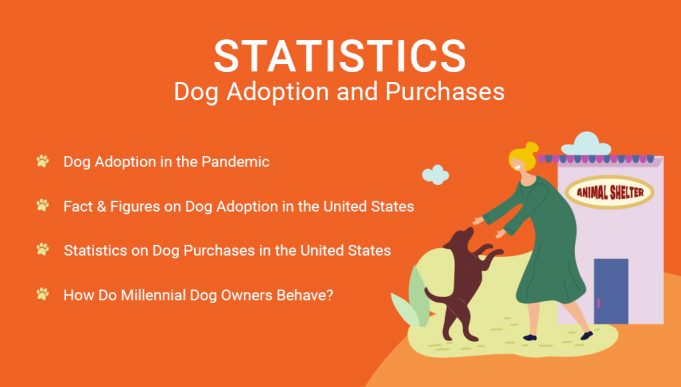Society lacks information on the correct way to deal with animals, generating frequent mistreatment cases and abandonment of dogs. The relationship of human beings with companion animals has accompanied behavioral changes in society itself. This relationship change has given these animals the status of a family member, living inside the home rather than outside. Although this coexistence is increasingly common, keeping an animal implies responsibilities for the owners. Legal provisions force the ethical commitment to the preservation of our pet's health, environment, and welfare. Here we will look at the statistics in the past year regarding dog adoption and purchases.
There has been tremendous growth in defending animal causes. Increasingly significant in independent organizations that act when the inefficient public power can not. These organizations cherish the life and well-being of these defenseless beings. About 500,000 dogs and cats are abandoned every year in America. We know that a portion of them are acquired as Christmas and Valentine's Day gifts, but the owners lose interest in them months later.
Significant Quotes
“Abandonment is very noticeable in the months after the festivities. From March until July that the puppies start to grow, if they survive.” – Dog Patrol
“In America, there is no census on dogs or domestic animals. However, the American Veterinary Medical Association (AVMA) estimates that there are around 28 million, of which 70% are on the streets, a figure that is growing by 20% annually.”

Dog Adoption in the Pandemic
For many New Yorkers, quarantine has become a time to realize a dream that wasn't possible due to work pressures. Thousands have rushed to adopt an animal, or at least take in foster care for an indefinite period of time. Dogs and cats have thus disappeared from every shelter in the city.
The Brooklyn-based charity Muddy Paws, which specializes in rescuing animals from municipal kennels, told Bloomberg news agency, “We definitely do not have any more animals for adoption at this time.” The Best Friends Animal Society stated the same. The New York-based Animal Care Centers launched an appeal on Friday of last week to find homes – even temporary ones – for about 200 animals. Two thousand people offered to take home an animal, be it a cat or dog, or even a rabbit.
Centers spokeswoman Katy Hansen explained, “People would like a dog, but they would feel guilty because everyone has to work and spend so much time away from home, leaving the animal alone.” The need to be cooped up in the house now makes adoption a real possibility.
Julia, a senior living in a small Manhattan apartment, says, “I've wanted a dog since I was a little girl. I've never had the courage to get one. But now it's time, Brutus is elderly, and he deserves to be pampered. We spend hours together on the couch watching old movies. We keep each other company” (Brutus is actually a very sweet half-dachshund, half-whatever).
Beyond New York
The same trend to adoption, or at least to take a dog in foster care for an indefinite period of time, is also infecting other cities, hand in hand with the advancement of the virus and the imposition of “stay at home.” Among other things, whoever takes a dog also assumes the right to walk it, and therefore ensures two or three daily walks (although in the U.S. for now, taking a walk is allowed to everyone, as long as you keep two meters away from other passers-by).
The only concern that the shelters express, at a time when they finally see their tenants find a home and affection, is that the economic crisis may fill the cells again in a few months: “When people are unemployed, without pay, without money, they are often forced to make painful sacrifices, and this could mean a wave of abandoned four-legged animals,” they admit to the Humane Rescue Alliance, of New Jersey. But for now, even their cells are empty.

Fact & Figures on Dog Adoption in the United States
The expressions “compassionate society” and “SPCA” are conventional; covers utilizing those names are not part of the ASPCA or The Humane Society of the United States. No administration establishment or creature association is responsible for arranging national statistics for the animal protection movement. These are public gauges; the figures may change from state to state.
Shelters
Every year about 6.5 million accompanying animals enter U.S. animal shelters throughout the world. About 3.3 million of these are dogs, while 3.2 million are cats. The number of dogs and cats entering US shelters has decreased from around 7.2 million per year in 2011. The figure is projected. Dogs have seen the greatest decline (from 3.9 million to 3.3 million). Around 3.2 million animals are taken to shelters every year (1.6 million dogs and 1.6 million cats).
Euthanized
Every year, roughly 1.5 million haven creatures are euthanized (670,000 canines and 860,000 felines). The quantity of canines and felines euthanized in the U.S. protects every year has declined from roughly 2.6 million out of 2011. This decrease can be halfway clarified by an expansion in the level of creatures embraced and an increment in the number of homeless creatures effectively getting back to their guardians.
On the Streets
Around 710,000 animals are on the streets. Of these, sixty-two thousand are dogs, and 90,000 are cats. These figures are based on data from the Shelter Animals Count and other known and expected sources.

Statistics on Dog Purchases in the United State: Statistics You Should Know
- World statistics state that more than half of the world's population (56%) has at least one dog.
- Latin America is the region with the highest number of dog owners; 80% of the Latin American population has an animal in their care.
- 68% of households in the United States have at least one dog, equivalent to 85 million households with dogs.
- Argentina, Mexico, and Brazil are the countries with the highest percentages of dog ownership. Along with the U.S. and Russia, these three countries are the most dog-owning in the world.
- Asia is the continent with the fewest dogs.
Generally speaking, as expected, dogs and cats are the most chosen animals. Still, there are differences between the countries with the most animals.
Worldwide Statistics
- Cats outnumber dogs in Russia, France, and the United States.
- Argentina leads the Latin American region in terms of dogs: 66% of the Argentine population has a dog, and in most cases, where there is one, there are two.

How Do Millennial Dog Owners Behave?
For the youngest, dogs occupy the place that, in previous generations, children used to have. As socially the age at which people decide to become parents has been delayed, it is increasingly common to hear them referred to as “children” and their owners as “parents.” And indeed, millennials perceive, treat, love, and care for them as if they were human children. While this is not unique to the generation, it is a more widespread view among owners of this age group.
- 3 out of 4 U.S. millennials own a dog, mostly a dog or cat.
- 88% of these millennials believe that owning dogs is a good way to prepare for parenthood.

How Much and on What Do They Spend for Their Dogs?
In the United States, the average cost of food for dogs or cats is equivalent to USD 235 per year. In Mexico and Argentina, the average monthly expenditure is about 4,000 pesos (in the country's currency). Even so, these owners decide, voluntarily and because of their mentality regarding dogs, to spend even higher numbers. This change of perspective on dogs means that they are more selective about the products and services they choose for them; and, consequently, a not minor fact for the sector: they are willing to spend to get quality.
Organic food is an area of dog food that is booming, and especially, food with formulas for specific weights, ages and conditions; in the same way, humanization and the choice of dog food similar to human food is increasing:
- More than 50% of millennials say they give their dogs the type of food they themselves follow, such as low in carbohydrates, high in protein, etc.
- 40% of dog owners have food subscriptions for themselves and their dogs.

Dogs per 100 Inhabitants Throughout the World
Quantitative statistics on the number of dogs in Europe and the USA make it possible to calculate dog diffusion indices with the resident population, thus offering an interesting comparison between the two sides of the Atlantic.
The analysis shows that cats are the most common in the USA and the EU, ahead of dogs, birds, small mammals, and reptiles. The data, however, show that in the European Union, the presence of the most popular dogs is at a significantly lower level than in the United States.
United States
If there are 27.5 dogs for every 100 inhabitants in the USA, in the EU, the figure is 12.6. Similarly, ,there are 28.9 cats in the USA for every 100 inhabitants, while in Europe,, the figure is 14.8.
Europe
On the other hand, the concentration of birds appears to be in contrast. They are equal to 8 per 100 residents in Europe and 6.2 in the United States. The presence of small mammals is similar in the two contexts (4.3 in the USA, 4 in the EU). As far as reptiles go, the statistics indicate a value of 2.9 per 100 inhabitants in the US and 1.2 in the EU. In contrast,, the European level data shows the number of dogs per population in the six main EU countries. France has 20.2 cats per 100 inhabitants, followed by Germany (16.3), Poland (16), Italy (12.3), the United Kingdom (12.2), and Spain (8.2).
Dogs are mainly present in Poland (18.8 per 100 inhabitants) and the UK (13 per 100 inhabitants). They are preceded by Spain (11.5), Italy (11.5), France (11), and Germany (10.5). Birds are prevalent in Italy (21.2 per 100 inhabitants) and Spain (15.1). Then followed by France (8.7), Germany (5.6), Poland (3.2) and UK (1.1).
Germany and France have the highest concentration of small mammals. Respectively equal to 6.1 and 5 per 100 inhabitants. Therefore, Germany and Spain precede Spain (3.8), Italy (3.0), United Kingdom (2.9), and Poland (2.5). Finally, reptiles are most prevalent in Italy (2.2 per 100 inhabitants) and Spain (1.7), followed by France (1.6), Germany (1.4), UK (1.1), and Poland (0.5).
What Is the Determining Statistic?
There is one statistic that affects and triggers all the others. It is, without a doubt, a change in the market in recent years. It refers to the large increase in the number of millennial dog owners.
The main reason for this change's impact is, nothing more and nothing less, that we find ourselves with dog owners who have a new mentality; within their scheme of things, dogs take on another important, and to our luck, much greater than they had before. Now they have become dog parents.
As with many dog market trends, the big driver is the changing perception of the role dogs plays in people's lives. Dogs are now widely viewed as integral members of the family. This new mindset can translate into exponential and significant growth in the market for dog accessories, services, and nutrition. It will be up to the companies and each sector to mobilize and act to grow and empower themselves along with the trend and prepare to meet the new market demands.
Final Thoughts
Statistics for the industry are a great indicator of what is happening locally and internationally. Without a doubt, knowing the data can benefit us greatly. Paying attention to the statistics and adapting to them. The trends and numbers are useful to know. They show us how and where this will continue to develop in the future.
Read Next: 50 Dog Adoption Questions Shelters Ask














